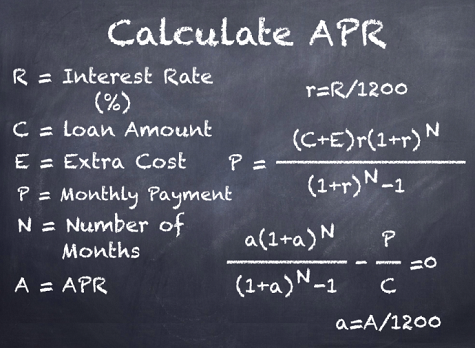Section 8-6: Determining the APR
Section 8-6: Determining the APR
Overview

 APR, or Annual Percentage Rate, is a standardized way of expressing the cost of borrowing money, including interest rates and certain fees, over the course of a year. To determine the APR, you'll need to consider several factors, including the interest rate, any additional fees or charges, and how often interest is compounded.
APR, or Annual Percentage Rate, is a standardized way of expressing the cost of borrowing money, including interest rates and certain fees, over the course of a year. To determine the APR, you'll need to consider several factors, including the interest rate, any additional fees or charges, and how often interest is compounded.
Here's a general formula to calculate APR:
Here's a breakdown of the terms used in the formula:
- Number of Payments: This is the total number of payments you'll make over the term of the loan.
- Finance Charge: The total cost of borrowing, including interest and any other fees.
- Principal Balance: The original amount of money borrowed.
- Total of Payments: The sum of all payments made over the term of the loan.
- Term of Loan: The length of time over which the loan is repaid, typically expressed in years.
Here's a step-by-step guide to calculating APR:
- Determine the finance charge: This includes any interest charges and fees associated with the loan.
- Calculate the total of payments: Add up all the payments you'll make over the term of the loan.
- Plug the values into the formula and solve for APR.
Keep in mind that APR calculations can vary depending on the specifics of the loan, such as whether it's a fixed-rate or variable-rate loan, whether there are any introductory rates or promotional periods, and whether there are penalties for early repayment. If you're unsure about how to calculate the APR for a particular loan, it's always best to consult with a financial advisor or use an online APR calculator.
Online Textbook Read Section 8-6: (Determining the APR)
